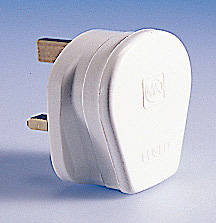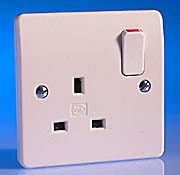It seems my last attempt to post this question did not work. I have above counter switches connected to under counter sockets for my dishwasher/washing machine etc. Can I fit a cooker switch with plug socket attached to the exsisting wiring to control my dishwasher and kettle?
You are using an out of date browser. It may not display this or other websites correctly.
You should upgrade or use an alternative browser.
You should upgrade or use an alternative browser.
plug socket
- Thread starter soulmasterjohn
- Start date
H
holmslaw
..
I may not have explained what I want to do very well. I do not want to connect a cooker I just want to use a similar kind of switch, is there such a switch on the market?
- Joined
- 28 Jan 2010
- Messages
- 641
- Reaction score
- 75
- Country

Yes.
Hi Skenk. seems our messages are crossing over. Yes I want to plug my kettle in next to the on/off switch for my dishwasher, but, my wife only wants one switch on the wall
- Joined
- 28 Jan 2010
- Messages
- 641
- Reaction score
- 75
- Country

You can either use a cooker control unit, or a dual backox and fit a single socket next to the switch.
Assuming the feed to the switch isn't a spur of course.
Assuming the feed to the switch isn't a spur of course.
Either way, you will need to chop the wall out to accommodate either a double or dual box. Make sure the switch you buy isn't marked 'cooker' as this would be misleading (really it should be marked dishwasher). As Loverocket says, you can only do this if the circuit is suitable.
I think I can see what you are trying to do, but its a cack-handed way of doing it.
You would need to find a cooker switch that does not actually say "cooker" on it. HERE'S ONE
I guess the existing fused spur is just a single box, so you'll need to chop out the wall and put in a double box. It will need to be a deep one (at least 35mm as this type of switch is quite deep).
IMHO it will look pants. Cooker switches are designed to carry high currents and are very chunky. You'd be better off with a dual back box with an FCU and a single socket side by side.
Note these solutions only work if your existing point is not already a spur.
Capish?
You would need to find a cooker switch that does not actually say "cooker" on it. HERE'S ONE
I guess the existing fused spur is just a single box, so you'll need to chop out the wall and put in a double box. It will need to be a deep one (at least 35mm as this type of switch is quite deep).
IMHO it will look pants. Cooker switches are designed to carry high currents and are very chunky. You'd be better off with a dual back box with an FCU and a single socket side by side.
Note these solutions only work if your existing point is not already a spur.
Capish?
I wouldn't do it that way - even if you fitted a cooker control unit (ccu) which didn't actually say "cooker" on it I would consider it misleading because that type of outlet is intended for a cooker.
As already mentioned the best way would be to fit a switch next to a socket, possibly in a dual backbox if you absolutely have to have them right next to each other. That is what a professional would do.
As already mentioned the best way would be to fit a switch next to a socket, possibly in a dual backbox if you absolutely have to have them right next to each other. That is what a professional would do.
See pp 69-71 if you don't want the socket to be a switched one.
But I really don't get this:
What's the big deal with just chopping a new hole for a new socket? (Apart from that being notifiable).
But I really don't get this:
You currently have a switch for the DW socket, and you want to end up with a switch for the DW socket and a new socket for the kettle. So you'll end up with a 2-gang accessory where there's currently a 1-gang, and you'll have to chop a bigger hole in the wall to fit it.my wife only wants one switch on the wall
What's the big deal with just chopping a new hole for a new socket? (Apart from that being notifiable).
This is a plug:with plug socket attached

This is a socket:

Despite many people using the hideous phrase, there is no such thing as a 'plug socket'.
- Joined
- 28 Jan 2010
- Messages
- 641
- Reaction score
- 75
- Country

This is a plug:with plug socket attached

This is a socket:

Despite many people using the hideous phrase, there is no such thing as a 'plug socket'.
I don't find "plug socket" anywhere near as bad as other phrases. The socket is for a plug, ergo "plug socket" isn't too bad IMHO. (the socket in which an eye sits is after all called an "eye socket") Far better than people refering to socket outlets as "plugs"
Sparks can't take too much high ground on this when most use the disgustingly redundant acronym "PAT testing".
DIYnot Local
Staff member
If you need to find a tradesperson to get your job done, please try our local search below, or if you are doing it yourself you can find suppliers local to you.
Select the supplier or trade you require, enter your location to begin your search.
Please select a service and enter a location to continue...
Are you a trade or supplier? You can create your listing free at DIYnot Local
Similar threads
- Replies
- 3
- Views
- 2K
